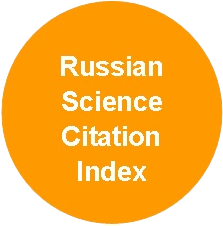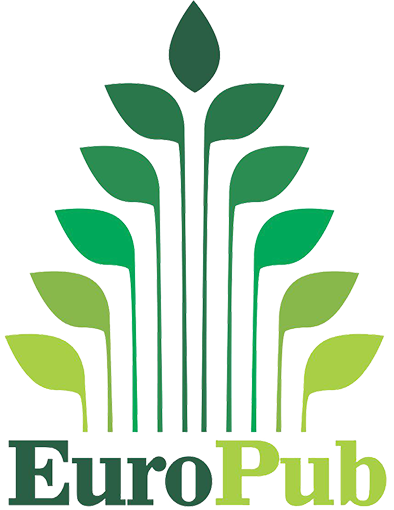Active Carbons from Algae Residue of Alginate Production Containing Groundwood
DOI:
https://doi.org/10.37482/0536-1036-2025-5-169-179Keywords:
alginate production, alginate production secondary resource, wood flour, active carbons, pyrolysis, clarification capacity, hexane and water vapor sorption, planned experimentAbstract
Active carbons obtained from various carbon-containing materials are highly porous carbon adsorbents with a developed internal surface. Particular attention should be paid to large-tonnage waste from the wood-chemical industry and agriculture, as well as wood processing. Such waste includes charcoal, lignin, sawdust and chips, pieces of bark, straw and husks from the processing of finished products, nut shells, fruit pits, and leaves of fruit trees. The porous substance obtained from wood raw materials has a high adsorption capacity, as well as a large specific surface area. In the course of the deep processing of brown algae at the Arkhangelsk Seaweed Factory, a large amount of organic waste is generated. The aim of the work has been to obtain active carbons from alginate waste consisting of 70 % wood flour. For this purpose, the method of thermochemical activation with sodium hydroxide as an activating agent has been used. The initial raw material has had a moisture content of 76 % and a diverse composition of mineral and organic substances. The research has been carried out as a planned experiment. The design chosen has been a 2nd-order central composite rotatable one for 3 factors. The independent variables have been the sodium hydroxide dosage, pyrolisis temperature and its duration. Based on the results of the study, the optimal values of these factors for obtaining active carbons from algal waste have been determined, as well as the optimal parameters affecting the sorption capacity and porous structure of active carbons. The work is of practical importance, since active carbon in powder and granular forms is actively used in various industries, including pharmaceutical, food, distillery, gas purification, wastewater treatment, biomedicine, and can also be used in agriculture as agricultural sorbents and soil improvement components. Based on the results of the research, it can be concluded that the use of organic waste as a raw material for the synthesis of active carbon by thermochemical activation with sodium hydroxide is of great interest.
Downloads
References
Анциферова (Плахина) Д.С. Термокаталитический пиролиз отходов переработки сельскохозяйственных культур: выпускная квалификац. работа. Архангельск: Сев. (Арктич.) федер. ун-т им. М.В. Ломоносова, 2018. 111 с. Режим доступа: https://library.narfu.ru/components/com_irbis/pdf_view/?316956 (дата обращения: 15.06.24). Antsiferova (Plakhina) D.S. Thermocatalytic Pyrolysis of Crop Processing Waste: Final Qualifying Work. Northern (Arctic) Federal University named after M.V. Lomonosov, 2018. 111 p. (In Russ.).
Анциферова (Плахина) Д.С., Смирнова А.И. Пиролиз отходов сельскохозяйственных культур // Ломоносовские научные чтения студентов, аспирантов и молодых ученых–2017: сб. ст. Архангельск: Сев. (Арктич.) федер. ун-т им. М.В. Ломоносова, 2017. С. 115–118. Antsiferova (Plakhina) D.S., Smirnova A.I. Pyrolysis of Wastes of Agricultural Crops. Lomonosovskie nauchnye chteniya studentov, asprirantov i molodykh uchenykh – 2017: Collection of Articles. Arkhangelsk, Northern (Arctic) Federal University named after M.V. Lomonosov, 2017, pp. 115–118. (In Russ.).
Баширов И.И. Получение формованного углеродного адсорбента из нефтяного сырья методами паровой и щелочной активации: дис. ... канд. техн. наук. Уфа, 2016. 121 с. Bashirov I.I. Production of Molded Carbon Adsorbent from Oil Feedstock by Steam and Alkaline Activation Methods: Cand. Tech. Sci. Diss. Ufa, 2016. 121 p. (In Russ.).
Белецкая М.Г., Богданович Н.И., Макаревич Н.А. Технология углеродных адсорбентов. Физико-химический анализ активных углей. Архангельск: Сев. (Арктич.) федер. ун-т им. М.В. Ломоносова, 2015. 96 с. Beletskaya M.G., Bogdanovich N.I., Makarevich N.A. Carbon Adsorbent Technology. Physico-Chemical Analysis of Active Carbons. Arkhangelsk, Northern (Arctic) Federal University named after M.V. Lomonosov, 2015. 96 p. (In Russ.).
Богданович Н.И., Кузнецова Л.Н., Третьяков С.И., Жабин В.И. Планирование эксперимента в примерах и расчетах. Архангельск: Сев. (Арктич.) федер. ун-т им. М.В. Ломоносова, 2010. 127 с. Bogdanovich N.I., Kuznetsova L.N., Tretyakov S.I., Zhabin V.I. Experiment Planning in Examples and Calculations. Arkhangelsk, Northern (Arctic) Federal University named after M.V. Lomonosov, 2010. 127 p. (In Russ.).
Евдокимова Е.В. Получение активного угля на основе осиновой древесины: дис. ... канд. техн. наук. Екатеринбург, 2020. 111 с. Evdokimova E.V. Production of Active Carbon Based on Aspen Wood: Cand. Tech. Sci. Diss. Yekaterinburg, 2020. 111 p. (In Russ.).
Кельцев Н.В. Основы адсорбционной техники. М.: Химия, 1984. 592 с. Keltsev N.V. Fundamentals of Adsorption Technology. Moscow, Khimiya Publ., 1984. 592 p. (In Russ.).
Когановский A.M., Клименко Н.А., Левченко Т.М., Марутовский Р.М., Рода И.Г. Очистка и использование сточных вод в промышленном водоснабжении. М.: Химия, 1983. 288 с. Koganovskij A.M., Klimenko N.A., Levchenko T.M., Marutovskij R.M., Roda I.G. Wastewater Treatment and Use in Industrial Water Supply. Moscow, Khimiya Publ., 1983. 288 p. (In Russ.).
Кормовые добавки из морских водорослей и продуктов их переработки / под ред. А.В. Подкорытовой. М.: ВНИРО, 2017. 70 с. Feed Additives from Seaweeds and Their Processed Products. Ed by A.V. Podkorytova. Moscow, Russian Federal Research Institute of Fisheries and Oceanography, 2017. 70 p. (In Russ.).
Макаревич Н.А. Межфазная граница «газ–жидкость–твердое тело». Архангельск: САФУ, 2018. 411 с. Makarevich N.A. Gas-Liquid-Solid Interface Boundary. Arkhangelsk, Northern (Arctic) Federal University Publ., 2018. 411 p. (In Russ.).
Манина Т.С. Получение и исследование высокопористых углеродных сорбентов на основе естественно окисленных углей Кузбасса: дис. ... канд. хим. наук. Кемерово, 2013. 132 с. Manina T.S. Production and Research of Highly Porous Carbon Sorbents Based on Naturally Oxidized Coals of Kuzbass: Cand. Chem. Sci. Diss. Kemerovo, 2013. 132 p. (In Russ.).
Мухин В.М., Курилкин А.А., Клушин В.Н. Применение активного угля, модифицированного гидроксидом калия, в очистке сточной воды на действующем предприятии // Сорбцион. и хроматографич. процессы. 2013. Т. 13, вып. 2. С. 188–191. Mukhin V.M., Kurilkin A.A., Klushin V.N. The Application of Active Carbon Modified by Potassium Hydroxide in the Purification of Waste Water of Functional Entertainment. Sorbtsionnye i Khromatograficheskie Protsessy, 2013, vol. 13, iss. 2, pp. 188–191. (In Russ.).
Мухин В.М., Тарасов А.В., Клушин В.Н. Активные угли России / под ред. А.В. Тарасова. М.: Металлургия, 2000. 352 с. Mukhin V.M., Tarasov A.V., Klushin V.N. Active Carbons of Russia. Ed. by A.V. Tarasov. Moscow, Metallurgiya Publ., 2000. 352 p. (In Russ.).
Романенко (Хвиюзова) К.А., Богданович Н.И., Канарский А.В. Получение активных углей пиролизом гидролизного лигнина // Изв. вузов. Лесн. журн. 2017. No 4. С. 162–171. Romanenko (Khviyuzova) K.A., Bogdanovich N.I., Kanarskiy A.V. Obtaining of Activated Carbons by Pyrolysis of Hydrolytic Lignin. Lesnoy Zhurnal = Russian Forestry Journal, 2017, no. 4, pp. 162–171. (In Russ.).
Славянский А.К., Шарков В.И., Ливеровский А.А. Химическая технология древесины. Гослесбумиздат, 1962. С. 16–18. Slavyanskij A.K., Sharkov V.I., Liverovskij A.A. Chemical Technology of Wood. Goslesbumizdat Publ., 1962, pp. 16–18. (In Russ.).
Энтеросорбция / под ред. Н.А. Белякова. Л.: Центр сорбционных технологий, 1991. 336 с. Enterosorption. Ed. by N.A. Belyakov. Leningrad, Centre of Sorption Technologies Publ., 1991. 336 p. (In Russ.).
Bansal R.C., Goyal M. Activated Carbon Adsorption. USA, New York, CRC Press, 2005. 520 p. https://doi.org/10.1201/9781420028812
Celis de J., Amadeo N.E., Cukierman A.L. In situ Modification of Activated Carbons Developed from a Native Invasive Wood on Removal of Trace Toxic Metals from Wastewater. Journal of Hazardous Materials, 2009, vol. 161, iss. 1, pp. 217–223. https://doi.org/10.1016/j.jhazmat.2008.03.075
Hayashi J., Kazehaya A., Muroyama K., Watkinson A.P. Preparation of Activated Carbon from Lignin by Chemical Activation. Carbon, 2000, vol. 38, iss. 13, pp. 1873–1878. https://doi.org/10.1016/S0008-6223 (00)00027-0
Nanda S., Dalai A.K., Berruti F., Kozinski J.A. Biochar as an Exceptional Bioresource for Energy, Agronomy, Carbon Sequestration, Activated Carbon and Specialty Materials. Waste and Biomass Valorization, 2016, vol. 7, pp. 201–235. https://doi.org/10.1007/s12649-015-9459-z
Mustranta A. Novel Applications of Lipases. Espoo, University of Turku, VTT Technical Research Centre of Finland, 1995. 83 p.
Ramanujan R.V., Purushotham S., Chia M.H. Processing and Characterization of Activated Carbon Coated Magnetic Particles for Biomedical Applications. Materials Science and Engineering: C, 2007, vol. 27, iss. 4, pp. 659–664. https://doi.org/10.1016/j.msec.2006.06.007
Rivera-Utrilla J., Sanchez-Polo M., Gómez-Serrano V., Álvarez P.M., Alvim-Ferraz M.C.M., Dias J.M. Activated Carbon Modifications to Enhance its Water Treatment Applications. An Overview. Journal of Hazardous Materials, 2011, vol. 187, iss. 1–3, pp. 1–23. https://doi.org/10.1016/j.jhazmat.2011.01.033













